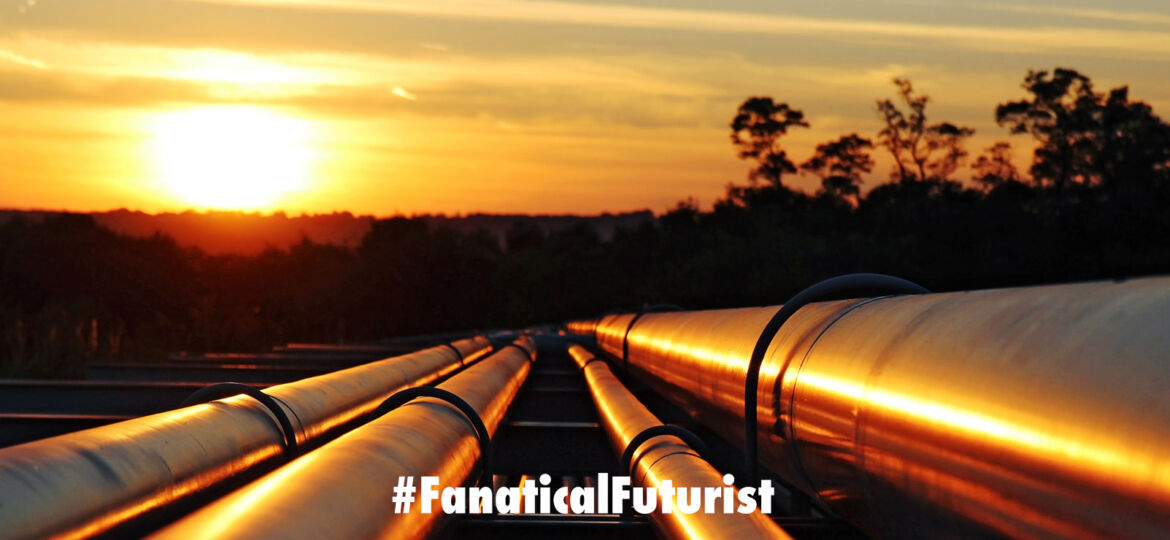
WHY THIS MATTERS IN BRIEF
Hydrogen has more than ten times the energy density of lithium Ion batteries, zero emissions, and nothing to recycle, but distributing it has been an issue until now.
 Love the Exponential Future? Join our XPotential Community, future proof yourself with courses from XPotential University, connect, watch a keynote, or browse my blog.
Love the Exponential Future? Join our XPotential Community, future proof yourself with courses from XPotential University, connect, watch a keynote, or browse my blog.
With over 1 trillion watts of installed renewable energy generation renewables have finally become the world’s cheapest form of energy so it should come as any surprise that using fossil fuels as a means to generate energy is under threat. While renewables like solar and wind power are rising to prominence other forms of green energy production like Hydrogen have been languishing in the slow lane in part because in order to switch the global economy to hydrogen fuel companies would have to make huge investments in building out the infrastructure, from production plants to distribution centers and so on, to support it.
One of the key issues making hydrogen a less attractive energy source than Lithium Ion batteries, for example, for use in electric vehicles is the fact that it needs to be kept cold and pressurised in special tanks, like the ones in this superyacht, which makes the logistics of trucking it around considerably tougher than that of gasoline.
See the idea for yourself
But now a new hydrogen blending technology offers a potential solution – by injecting hydrogen directly into the existing natural gas grid it could be piped quickly and efficiently across an entire city, and gas stations could simply separate it out and suck it back out of the gas pipelines to fill their tanks. The distribution problem would then disappear, enabling hydrogen pumps to quickly pop up all over town – all of which means fuelling your hydrogen powered drone, supercar, or truck is no longer an issue.
To test the concept, SoCalGas is setting up a hydrogen blending demonstration program that will see surplus renewable energy electrolysed into hydrogen gas, which will be blended into the natural gas supply. An isolated segment of the grid will be chosen early this year – one that uses mainly polyethylene piping – and hydrogen will be blended in at an initial proportion of around 1 percent, potentially rising as high as 20 percent during testing.
A hydrogen-natural gas blend at these proportions behaves almost identically to a regular compressed natural gas feed when it’s burned to power kitchen stoves, boilers, hot water services and other such appliances. The main difference is a reduction in CO2 emissions at the burn site. Only once blends reach the 30 to 40 percent level does it really need to be treated much differently to a normal gas line.
On the other end, SoCalGas has also announced it’s working with Dutch company HyET Hydrogen to deploy HyET’s Electrochemical Hydrogen Purification and Compression (EHPC) technology to get the H2 out of the gas pipes and into a compressed storage tank. The EHPC system uses an electrically-actuated, hydrogen-selective membrane to suck the small hydrogen molecules through without allowing the methane and other natural gas molecules through.
The initial deployment is expected to extract and compress about 10 kg, or 22 lb, of hydrogen per day, but within two years that figure will rise tenfold. As 100 kg, or 220 lb, of compressed hydrogen would be enough to fill up about 20 fuel-cell cars, so it’s not far from that point to a commercially workable solution for gas stations.
If gas stations can easily hook themselves up to a reliable and fuss-free hydrogen source, then a lack of H2 pumps could quickly cease to be a barrier for fuel-cell vehicles which would then no doubt help accelerate their roll out. The same infrastructure could also feed larger trucking depots or airports where hydrogen-fuelled aircraft, like Airbus’ latest E-Zero hydrogen concept aircraft, could stop to refuel.
Source: SoCalGas
















